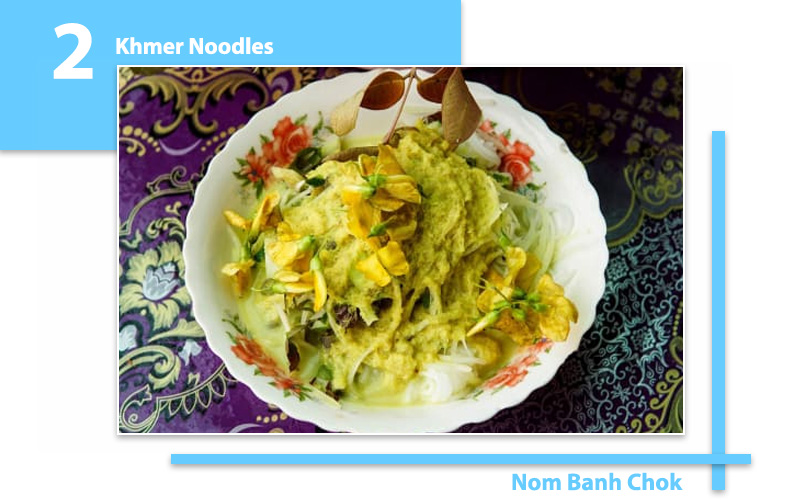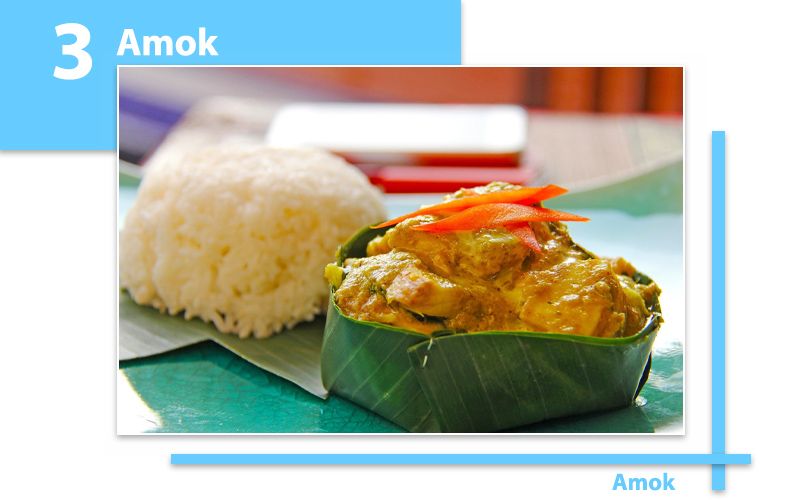
- On 12 August, 2020
- In ALL BLOGS CAMBODIA BLOGS
- Tags Tags: cambodia, cuisines, foods
10 Cambodian Foods Every Visitors Need to Try
Cambodian cuisine has a long history and a diverse range of influences, yet it’s only now becoming known beyond the country’s borders. In fact, the only place you can experience all it has to offer is in the country itself. Here are 10 of the best dishes to try by CNN.
Samlor Kako: Cambodian Traditional Soup

While amok is sometimes called the country’s national dish, and might be the one most familiar to tourists, samlor korkor has a better claim to being the true national dish of Cambodia. It has been eaten for hundreds of years and today can be found in restaurants, roadside stands and family homes alike.
The ingredients list for this nourishing soup is versatile and easily adapted to whatever is seasonal and abundant; it often includes more than a dozen vegetables. It can be made with almost any type of meat, but most commonly it’s a hearty soup made from catfish and pork belly. The soup always includes two quintessential Cambodian ingredients — prahok, a type of fermented fish, and kroeung, a fragrant curry paste — and is then thickened with toasted ground rice.
Nom banh chok: Khmer noodles

Nom banh chok is a beloved Cambodian dish, so much so that in English it’s sometimes called simply “Khmer noodles.” It’s a typical breakfast food, and every morning you’ll find it being sold by women carrying baskets of fresh rice noodles hanging from a pole balanced on their shoulders.
The dish consists of fresh noodles laboriously pounded out of rice, topped with fish-based green curry gravy made from lemongrass, fingerroot ginger, turmeric, and garlic. Fresh cucumbers, banana flower, long beans, edible flowers, and wild leaves are heaped on top. In Siem Reap, it is served with a sweet sauce called tuk paem made from palm sugar and peanuts.
Amok

Amok is one of the best-known Cambodian dishes, but you’ll find similar meals in neighboring countries. The addition of slok ngor, a local herb that imparts a subtly bitter flavor, separates the Cambodian version from the rest of the pack.
The curry is made with fresh coconut milk and kroeung. Traditionally the dish was made with either fish or snails, but now you can find chicken and even vegetarian versions. At upscale restaurants amok is steamed with egg in a banana leaf for a mousse-like texture, while more homestyle places serve a boiled version that is more like a soupy fish curry.
Bai sach chrouk: Pork and rice

Served early mornings on street corners all over Cambodia, bai sach chrouk, or pork and rice, is one of the simplest and most delicious dishes the country has to offer. Thinly sliced pork is marinated in palm sugar and fish sauce, then slow-grilled over warm coals to impart a smoky sweetness.
It’s served over a hearty portion of white rice, with a helping of freshly pickled cucumbers and daikon radish with plenty of ginger. This classic Cambodia breakfast often comes with a bowl of chicken broth topped with scallions and fried onions.
Kari sach moan: Chicken red curry

Less spicy than the curries of neighboring Thailand, Cambodian red curry is made using large local red chilies that are remarkably mild, making for a rich but mellow dish. The curry contains chicken, white radish, sweet potatoes, fresh coconut milk, and kroeung. This delicious dish is usually served at weddings and other ceremonies and special occasions, and can be accompanied with fresh rice noodles, sliced baguette, or white rice.
Bok trop pgnon: Pounded eggplant dip

Bok, which translates as “smashed,” refers to a style of food preparation that involves pounding ingredients in a large wooden mortar. Trop pgnon are small, bitter pea eggplants, which grow wild in Cambodia.
Here, they are grilled and pounded with garlic, shallots, chilies and just enough sugar to take the edge off their bitterness. The dish usually contains some form of fish, either smoked fish or prahok, although it can be made without it. The eggplant dip is served alongside local fresh or steamed vegetable crudités.
Bok trop pgnon was traditionally prepared for workers harvesting rice, because it was easy to pack up to take to the fields.
Kha sach ko: Beef stewed in palm sugar

The word kha refers to a style of cooking in Cambodia in which palm sugar is caramelized into a sticky syrup, then used as the base of the dish. The beef version tastes marvelously complex — it contains multitudes — although the recipe itself is not very complicated. Every family has its own recipe, but most start with the kha base and include galangal, chilies, garlic, black pepper, and star anise.
Some versions include cloves, or make the broth with coconut water; others add tomatoes, tamarind, or soybean sauce. Kha sach ko is served with sliced baguette — in a nod to French imperialism — or noodles, and garnished with herbs, onion slices, and fried garlic.
Prahok ktis: Creamy prahok dip

After rice, the most important ingredient in Cambodian cuisine is prahok, a mash of salty fermented fish. It’s added in small quantities to bring an umami kick to many dishes, but in prahok ktis it has the starring role.
Cooked with fresh coconut cream, palm sugar, and minced pork, the pungent prahok becomes mild enough for even trepidatious visitors to enjoy. Another version of the dish, prahok kroeung ktis, adds a fragrant paste of root spices. Both are served with crunchy fresh vegetables.
Sngor chruak sach trei: Sour fish soup

Soups are a crucial element in Cambodian cuisine, and no meal is complete without one. The soups known as sngors are simple and extremely versatile. They’re designed to showcase the main ingredient, in this case, fish from the Tonle Sap, Cambodia’s great freshwater lake.
The fish is cooked in a light lemongrass broth that’s seasoned with lime juice and fried garlic, making for a wholesome soup served with local herbs, including Asian basil and sawleaf coriander. Other additions, such as straw mushrooms or shredded green mango, are optional.
Kari saraman: Beef saraman curry

The Cham people are a Muslim ethnic minority in Cambodia. Their cuisine eschews pork, which is widely found in Cambodian cooking, and instead features beef. In fact, the most respected beef sellers at the local markets in Siem Reap are Cham women.
Beef saraman curry is the most popular Cham-inspired dish, and little wonder, because it’s sensational. This rich coconut curry is one of Cambodia’s most complicated dishes, and is redolent with spices, with star anise and cassia bark most prominent. The curry is braised with whole peanuts and is most often served with sliced baguette.